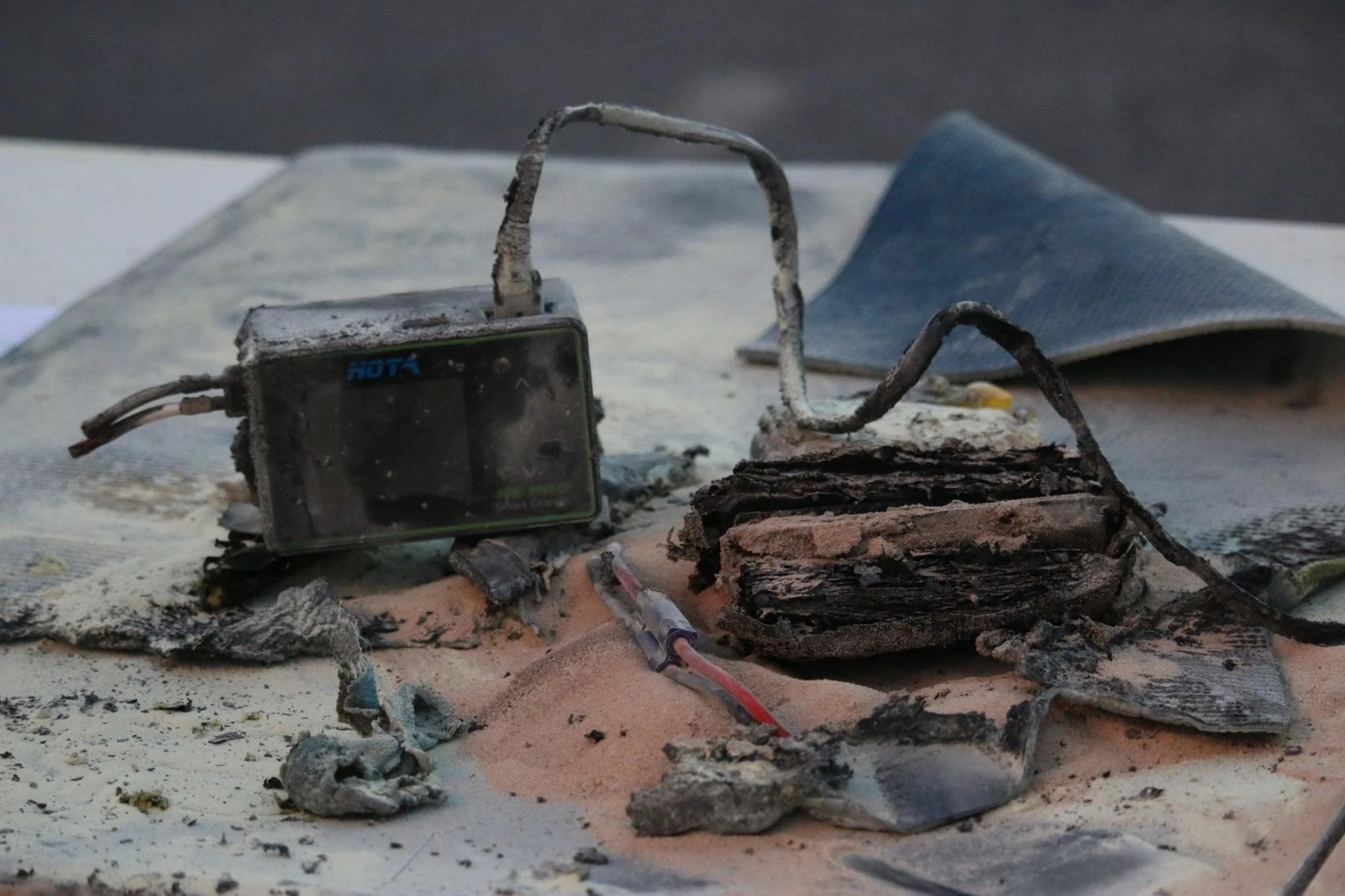
Akumulatory CNHL Lipo
CNHL dąży do dostarczania wysokiej jakości baterii Li-Po oraz produktów RC wszystkim entuzjastom hobby, oferując doskonałą obsługę klienta i konkurencyjne ceny
Jeśli interesujesz się samochodami RC, dronami lub innymi hobby o wysokich osiągach, prawdopodobnie słyszałeś przerażające historie o bateriach LiPo. Najczęstszym i najbardziej widocznym objawem problemu jest, gdy bateria zaczyna puchnąć jak poduszka. To jest to, co nazywa się spuchniętą baterią LiPo. To wyraźny znak ostrzegawczy, że coś jest nie tak wewnętrznie. Zrozumienie, dlaczego tak się dzieje i co z tym zrobić, to nie tylko kwestia ochrony twojego sprzętu — to kwestia zapewnienia bezpieczeństwa tobie i twojemu domowi przed potencjalnym pożarem.
Bateria LiPo nie puchnie bez powodu. Opuchlizna jest spowodowana nagromadzeniem gazu wewnątrz szczelnej torebki baterii. Ten gaz jest produktem ubocznym nieprawidłowej reakcji chemicznej wewnątrz. Kilka czynników może wywołać ten niebezpieczny proces, ale niemal wszystkie sprowadzają się do niewłaściwego użytkowania lub uszkodzenia.
To jeden z najczęstszych winowajców. Jeśli używasz niewłaściwych ustawień ładowarki lub jeśli ładowarka działa nieprawidłowo, może wymusić zbyt wysokie napięcie na ogniwa baterii. To przeciąża wewnętrzną chemię, powodując rozkład elektrolitu i uwalnianie gazu. To jak nadmuchiwanie opony — w końcu coś musi pęknąć.
Tak jak przeładowanie jest złe, tak samo jest z nadmiernym rozładowaniem baterii. Każda bateria LiPo ma bezpieczne minimalne napięcie. Jeśli przekroczysz ten punkt, wewnętrzna struktura ogniw może zostać trwale uszkodzona. Gdy próbujesz naładować baterię, która została nadmiernie rozładowana, staje się niestabilna, co prowadzi do gromadzenia się gazów i puchnięcia. Dlatego alarmy niskiego napięcia w twoich urządzeniach są tak ważne.
Baterie LiPo są delikatne. Silne uderzenie dronem, upuszczenie baterii na betonową podłogę lub przypadkowe przebicie jej narzędziem może spowodować wewnętrzne zwarcie. To natychmiastowe uszkodzenie może prowadzić do bardzo szybkiego i niebezpiecznego puchnięcia. Nawet samo zgniecenie lub wgniecenie baterii podczas przechowywania może naruszyć jej wewnętrzne warstwy i prowadzić do problemów w przyszłości.
Ciepło jest wrogiem każdej baterii, a szczególnie LiPo. Używanie lub ładowanie baterii, gdy jest już gorąca po użyciu, może przyspieszyć reakcje chemiczne wewnątrz, prowadząc do powstawania gazów. Pozostawianie baterii w gorącym samochodzie w upalny dzień to jedna z najgorszych rzeczy, jakie możesz zrobić, ponieważ utrzymujące się wysokie temperatury degradują baterię i mogą łatwo spowodować, że stanie się spuchniętą baterią LiPo.
Chociaż rzadko, może się zdarzyć. Wada w procesie produkcji może sprawić, że bateria będzie niestabilna od pierwszego dnia. Dlatego tak ważne jest kupowanie z renomowanych źródeł. Źle wykonana bateria to ryzyko bez względu na to, jak dobrze ją traktujesz.
Baterie LiPo nie trwają wiecznie. Za każdym razem, gdy ładujesz i rozładowujesz baterię, zachodzą drobne zmiany w jej wewnętrznej chemii. Po setkach cykli to naturalne zużycie może sprawić, że bateria stanie się mniej stabilna i bardziej podatna na puchnięcie, nawet jeśli dbałeś o nią idealnie.
Może to być spowodowane uszkodzeniem fizycznym lub czasem wadą produkcyjną. Gdy dodatnie i ujemne warstwy wewnątrz baterii stykają się, tworzy się zwarcie. Powoduje to ogromny, niekontrolowany przypływ energii, który generuje intensywne ciepło i dużo gazu bardzo szybko, prowadząc do niebezpiecznie spuchniętej baterii LiPo.
Pierwszą rzeczą do zrozumienia jest to, że spuchnięta bateria LiPo nie musi eksplodować w każdej chwili. Puchnięcie to środek powstrzymujący — elastyczna torebka rozszerza się, aby pomieścić palne gazy powstające wewnątrz. To znak, że bateria zawiodła wewnętrznie.
Jednak ta torebka może pomieścić tylko określoną ilość. Spuchnięta bateria LiPo jest wysoce niestabilna. Sytuacja staje się bardzo ryzykowna, jeśli zauważysz którykolwiek z tych objawów:
Jeśli zauważysz którykolwiek z tych znaków, ryzyko zapalenia się baterii (zdarzenie często nazywane "venting with flame") jest niezwykle wysokie. Choć pełna "eksplozja" jest rzadka, pożar LiPo jest niezwykle intensywny i może bardzo szybko zapalić otaczające materiały. Lekcja z incydentów bezpieczeństwa jest zawsze taka sama: spuchnięta bateria to zagrożenie pożarowe, które musi być traktowane z najwyższą ostrożnością.

To krótka i prosta sekcja: nie da się. Spuchniętej baterii LiPo nie można bezpiecznie naprawić i nigdy, przenigdy nie powinieneś próbować. Wewnętrzne uszkodzenia chemiczne są nieodwracalne.
Możesz natknąć się na filmy lub posty na forach o "naprawianiu" spuchniętej baterii przez jej przebicie, aby uwolnić gaz. To jest ogromnie niebezpieczne. Przebicie woreczka nie tylko uwolni toksyczne, łatwopalne gazy, ale niemal na pewno spowoduje natychmiastowy i gwałtowny pożar, gdy wewnętrzne komponenty zostaną wystawione na działanie powietrza i wilgoci. Każda próba "naprawy" lub "odpowietrzenia" spuchniętej baterii to proszenie się o pożar, poważne obrażenia lub szkody materialne.
Jedynym właściwym sposobem na "naprawę" spuchniętej baterii LiPo jest bezpieczne wycofanie jej z użytku, odpowiedzialna utylizacja i zastąpienie nową, zdrową baterią.
Jeśli odkryjesz spuchniętą baterię, twoim natychmiastowym priorytetem jest bezpieczeństwo. Musisz założyć, że może w każdej chwili zapalić się.
Jak tylko zauważysz jakiekolwiek spuchnięcie, odłącz baterię i przestań jej używać. Nie próbuj jej ładować. Nie próbuj rozładowywać jej za pomocą normalnego sprzętu. Bateria uległa awarii i nie jest już bezpieczna do użycia.
Musisz przenieść baterię w bezpieczne miejsce, z dala od wszystkiego, co łatwopalne.
Jeśli i tylko jeśli masz doświadczenie i czujesz się komfortowo z ryzykiem, możesz powoli rozładować baterię do 0V, aby uczynić ją bezpieczniejszą do utylizacji. Można to zrobić za pomocą specjalistycznego rozładowywacza baterii lub podłączając ją do niskoprądowego obciążenia, takiego jak mała żarówka. Proces ten powinien być przeprowadzany na zewnątrz, z baterią w ognioodpornym pojemniku, a ty musisz ją stale monitorować. Dla większości osób ten krok jest zbyt ryzykowny i lepiej go pominąć i przejść bezpośrednio do utylizacji.
Nigdy, przenigdy nie wyrzucaj baterii LiPo — zwłaszcza spuchniętej — do zwykłych śmieci. To poważne zagrożenie pożarowe dla pracowników oczyszczania i sprzętu na wysypiskach.
Zapobieganie jest zawsze najlepszym lekarstwem. Stosowanie dobrych nawyków pielęgnacji baterii to najlepszy sposób, by uniknąć problemów ze spuchniętą baterią LiPo.

Spuchnięta bateria LiPo to nie tylko uszkodzony sprzęt; to poważne ostrzeżenie o zagrożeniu bezpieczeństwa. Oznacza, że doszło do nieodwracalnych uszkodzeń wewnętrznych, a ryzyko pożaru jest wysokie. Nigdy nie próbuj używać ani naprawiać spuchniętej baterii. Jedynym bezpiecznym działaniem jest natychmiastowe odizolowanie jej, ostrożne obchodzenie się i odpowiedzialna utylizacja. Rozumiejąc przyczyny i stosując dobre praktyki bezpieczeństwa baterii, możesz cieszyć się swoim hobby, dbając o swoje bezpieczeństwo i mienie.

CNHL dąży do dostarczania wysokiej jakości baterii Li-Po oraz produktów RC wszystkim entuzjastom hobby, oferując doskonałą obsługę klienta i konkurencyjne ceny
Specyfikacje: Numer magazynowy: 500706EC5 Pojemność: 5000mAh Napięcie: 22.2V / 6-Cell / 6S1P Prąd rozładowania: 70C ciągły / 140C impulsowy Prąd ...
Zobacz pełne szczegółySpecyfikacje: Numer magazynowy: 1351506PZ Pojemność: 1350mAh Napięcie: 22.2V / 6-Cell / 6S1P Szybkość rozładowania: 150C ciągłe / 300C chwilowe M...
Zobacz pełne szczegółySpecyfikacje Numer magazynowy: 1301306BK Pojemność: 1300mAh Napięcie: 22.2V / 6-Cell / 6S1P Prąd rozładowania: 130C ciągły / 260C impulsowy Prąd ł...
Zobacz pełne szczegółySpecyfikacje: Numer magazynowy: 1501204 Pojemność: 1500mAh Napięcie: 14.8V / 4-Cell / 4S1P Szybkość rozładowania: 120C ciągłe / 240C impulsowe Mak...
Zobacz pełne szczegółySpecyfikacje: Numer magazynowy: 220303BK Pojemność: 2200mAh Napięcie: 11.1V / 3- ogniwa / 3S1P Wskaźnik rozładowania: 30C ciągły / 60C impulsowy M...
Zobacz pełne szczegółyMNRC MN300 to gotowy do jazdy (RTR) 4WD RC rock crawler w skali 1/12, przeznaczony do lekkiego wspinania, jazdy po szlakach i codziennej zabawy o...
Zobacz pełne szczegółyZainspirowany legendarnym brytyjskim myśliwcem z II wojny światowej, samolot RC VOLANTEX Spitfire łączy klasyczny wygląd wojennego ptaka z nowo...
Zobacz pełne szczegółyVOLANTEX BF109 4-kanałowy samolot RC RTF przenosi jeden z najbardziej ikonicznych myśliwców II wojny światowej do kompaktowego, przyjaznego dla ...
Zobacz pełne szczegółyVolantex RC Plane P51D V2 RTF to kompaktowy warbird w stylu II wojny światowej, zaprojektowany tak, aby nauka latania była jak najbardziej relak...
Zobacz pełne szczegółyMF-A84 690mm bezszczotkowy samolot RC to model w stylu wojskowym inspirowany klasycznymi myśliwcami takimi jak P-47 Thunderbolt i Ki-84. Z potęż...
Zobacz pełne szczegóły
Zostaw komentarz